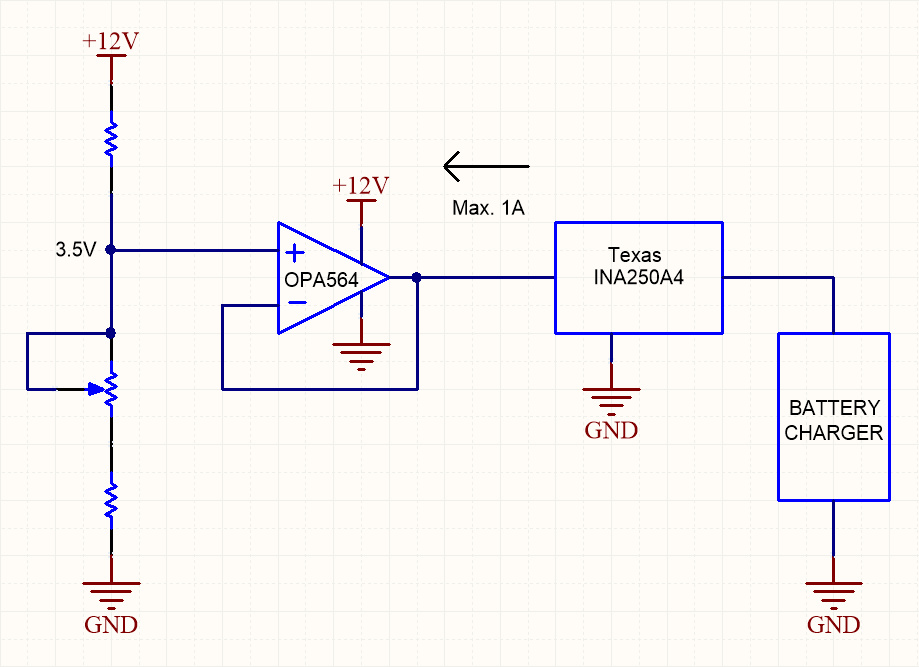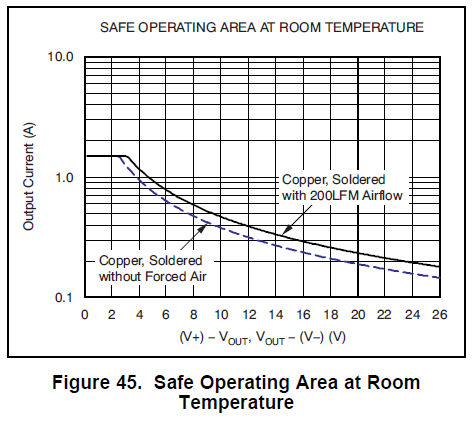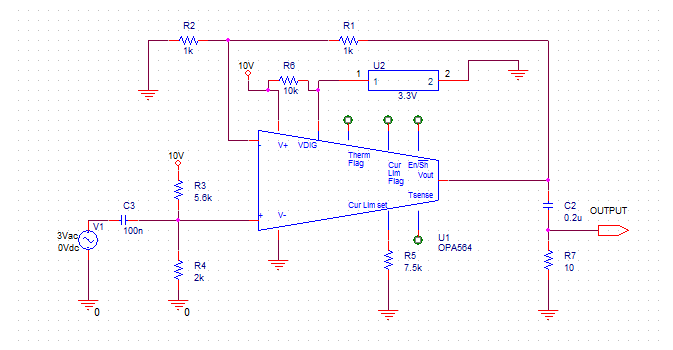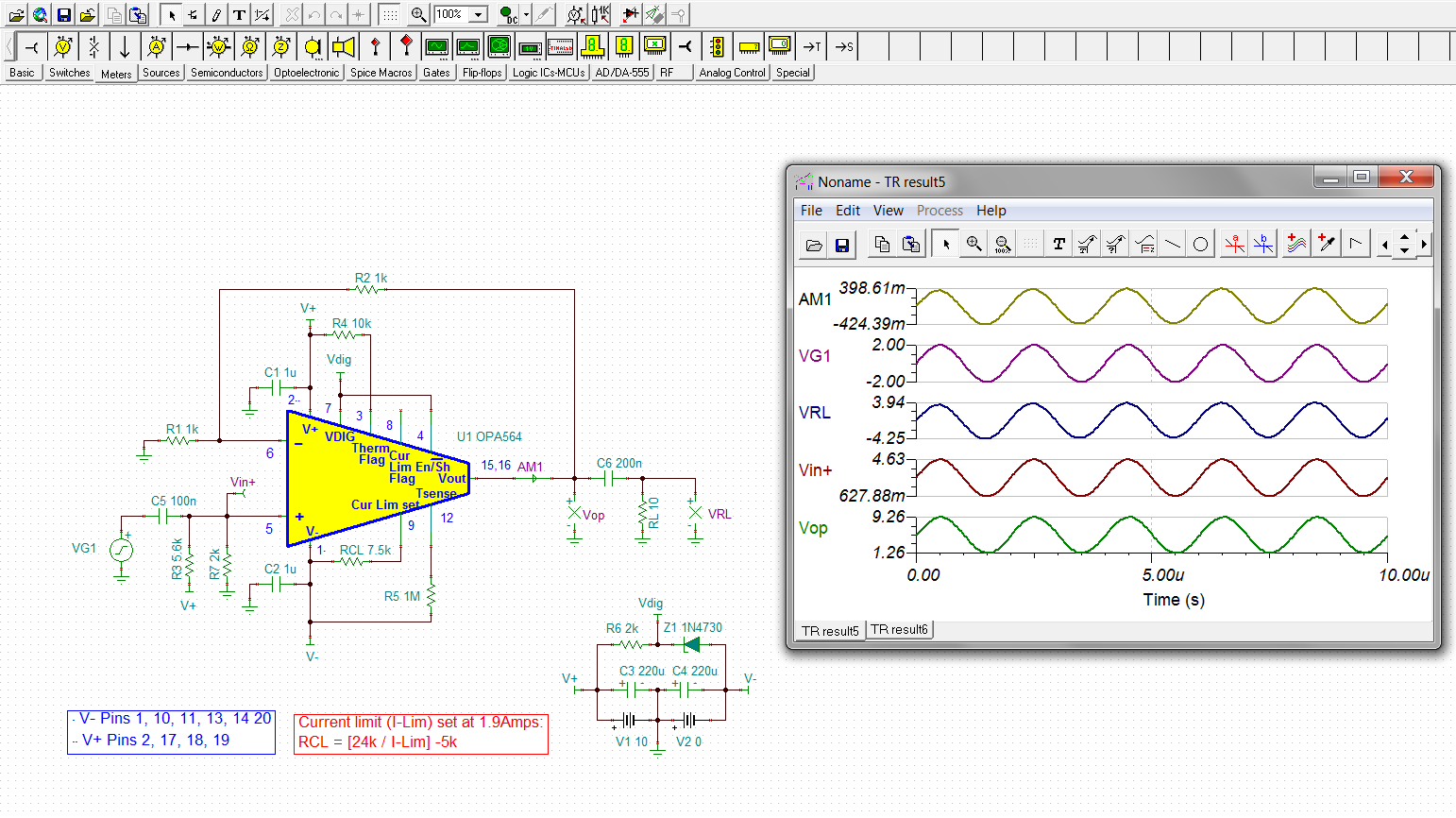Hi.
I need to use OPA564 as a voltage follower with current sink capability. The circuit I am going to implement is based on SLVA618 "Building your own battery simulator", but less complex. I want to use OPA564 instead of OPA544 because the design is based on a single +12V supply, the charging current I need to simulate is 1A max. and the price is much lower.
I know it´s a simple question, but I want to be sure that this amp is capable of sinking 1A while is acting as a voltage follower. I do not have experience usign op amps as current sinks. I have read the datasheet and I think this op amp is ok for my purposes, but I want to be sure. Could somebody help?
Thank you for your help!!





